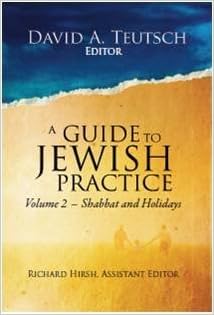It’s true. There is more going on in the world than the
World Series. I love the way the Red Sox unite our city, even among non-fans.
With 900 channels on tv, and with ipods, Pandora and Googleplay replacing
standard radio listening, it’s nice to have a shared experience that brings us
out of our neatly autonomous lives. But there are times when we’re not watching
games, or otherwise talking, reading or tweeting about sports. This column is
one of them (for this week, at least).
So you might not be aware that this has been a big week
for the Reconstructionist movement.
Last week, I received two brand-new copies of volume two
of A Guide to Jewish Practice. If you haven’t yet seen volume one, “Everyday Living,” it’s the first in a
set of three, comprising a Reconstructionist guide to everything from Tikkun
Olam/Social Justice practices to organizational ethics to keeping kosher to
everyday spirituality. This first volume received the prestigious Myra Kraft
Memorial Award for Contemporary Jewish Life from the Jewish Book Council in
2011. Feel free to borrow a copy next time you are at HBT or order your own copy.
In the second volume, “Shabbat and Holidays,” you will find two chapters that I authored.
Whoever can guess which two holidays I chose gets a chocolate kiss. (email me: rabbi@templehbt.org) In addition, I contributed commentary on the other holidays
in the book. The commentary is what makes this such a rich and cutting-edge
resource on Jewish holiday observance. Each commentator adds an individual
spark – a creative understanding, an unusual practice, an insightful teaching –
to the main text. We have one copy for the congregation’s library. I would
recommend you get a volume for your home to renew and inspire your family celebrations. The Shabbat
chapter alone is worth the entire volume.
In an historic development this past week, the Reconstructionist
movement announced the appointment of Rabbi Deborah Waxman as president-elect
of the Reconstructionist Rabbinical College and the movement. I have known and
admired Rabbi Waxman for many years as a scholar, a leader and a rabbi who is
deeply attuned to the real life of Jews today, grounded in an appreciation for the
gifts of the Jewish past.
As I listened to Rabbi Waxman share her goals for the
movement in a teleconference on Wednesday, I heard a vision that responds to a
new generation of Jews and a 21st-century approach to Judaism, one
that will “give us and the next generation ways and reasons to be Jewish, to
connect and grow through engagement with our rich tradition and with our
community.”
Her top two goals for the movement are about creating
meaningful Judaism and bringing our religious perspective to issues of the day:
v The Reconstructionist movement should be a place where
people “encounter wisdom or action, a ritual or person or experience that
illuminates the moment in which they are living, that lights at least the next
few steps of the path forward and hopefully leads to sustaining community.” She
aspires to make sure that “Judaism is at least one place that people turn to,
hopefully the first, but at least one place.”
v Rabbi Waxman also seeks to promote the Reconstructionist
commitment to living a life of social justice into the public square, to ensure
that progressive religion will be “a strong counter-force to fundamentalism.”
With a vision well beyond the needs of Reconstructionist communities, her
intent is to demonstrate emphatically that “it is possible to be sustained by a
religious perspective that respects and does not delegitimize the other.”
While it may be obvious that Deborah will be the first
woman to lead a rabbinical seminary or a Jewish movement, we should also be
proud that she is the very openly gay/lesbian leader as well. To read more…
Finally, to launch the newly-structured Reconstructionist
movement, this coming Sunday will be the first business meeting of the
newly-constituted plenum of the Reconstructionist movement. Craig will be on
the call as our congregational representative and I will participate, along
with other congregational rabbis, as an ex-officio member. We look forward to
sharing an update with you next week. We have much to celebrate in our small,
yet influential, movement.
Having said all that,
Go Sox!


